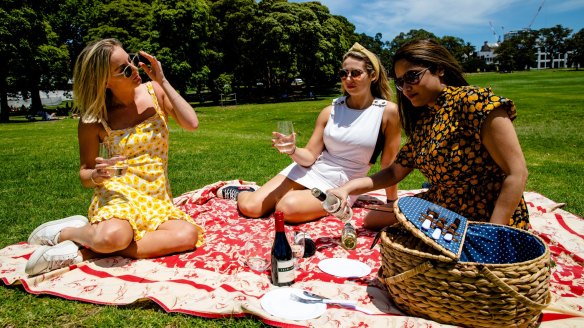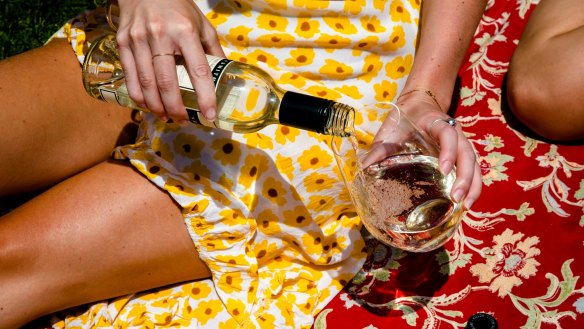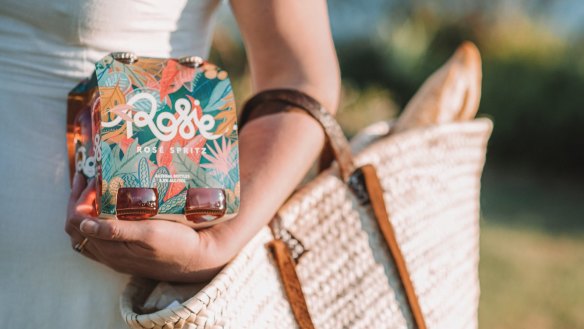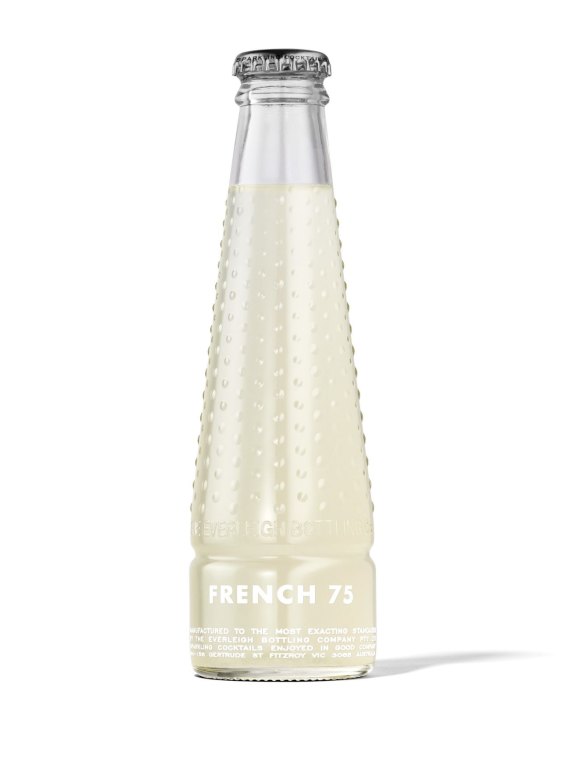Half-bottles, spritzes and cans: The wine trends for summer

Doing things by halves usually gets a bad rap, but for wine drinkers it's on the rise. The half-bottle is enjoying new popularity due to the pandemic.
"It's well known that retail sales of standard wine bottles increased from March as result of lockdowns," says Dan Farrenc, owner of online business Half Bottles – a side venture of Bellevue Hill Bottle Shop in Sydney.
"But then many people started saying 'hang on, I'm drinking a bit too much here' and we saw a huge spike in half-bottle sales around June that's continued. A lot of our customers still want to enjoy wine, but they don't want to crack open a standard-size bottle every time they fancy a drink."

Farrenc says he is also supplying more 375ml half-bottles to corporate companies hosting events. With coronavirus safety still a major concern, a half-bottle per person is potentially safer than 750ml of shared shiraz.
In spite of increased consumer demand, half-bottles of Australian wine are a rare breed, with the exception of sweet releases designed for dessert. (A lot of Farrenc's selection is from Europe.)
Half-bottle heroes of the domestic wine market include Brokenwood, St Hallet, Penfolds, and Shaw + Smith in the Adelaide Hills, but 375ml releases are limited and may not happen every vintage.

"Making half-bottles is an expensive process," says David LeMire, joint chief executive of Shaw + Smith. "The glass is not made in large quantities like 750ml bottles are, so you actually end up paying more for a smaller vessel.
"You also have to muck around with bottling line changes and labels to suit the different format. For a $10 or $15 wine, half-bottles don't make sense. But when the wine component is valuable, the extra cost is less of a factor."
Half-bottles of Shaw + Smith chardonnay, shiraz and pinot noir have been available for the past few years, and during Victoria's COVID-19 lockdown the winery also released a sauvignon blanc in the smaller format.

With more people ordering takeaway, LeMire saw the half-bottle as a better option for both trade and consumers – a way to bring a restaurant's wine-by-the-glass option into the home.
"We have also been hosting a lot of virtual tastings, and half-bottles are a more convenient way to send and receive wine samples," he says. "We love our little hand grenades."
Ben Luker is the Australia and New Zealand country manager for research and insights agency Wine Intelligence. He says increasing demand for half-bottles is also part of a larger trend whereby younger drinkers are consuming wine in alternative packaging.
"It's something we're seeing through our data – the younger demographic over-indexing on alternative wine packaging such as cans, premium casks and smaller-format bottles."
The trend is largely based on convenience and plays into "park appeal", he says.
"If you're off to the park or beach, and you're moving around, a 750ml bottle may not be the most convenient option if you're keen for a low-key drink with mates. It's breakable and it's a big amount if you're driving."
Park wine trends for the summer
Pink wine
"Some independent retailers and sommeliers will tell you 'rosé has been booming for so long, the popularity is coming to an end' but from our perspective, there is still a lot of room for rosé growth in Australia," says Luker. "More than 50 per cent of regular wine drinkers in the United Kingdom consume rosé, whereas in Australia it's just 35 per cent. Like it or not, Australia traditionally follows the UK in our drinking habits – we're just a little slower."
Canned wine
Designed to be cracked while cold and fresh, canned wines are increasing in popularity with glass-adverse punters. "Canned wine may have a stigma for traditional wine drinkers, but for many younger people the convenience is highly appealing," says Luker.
Spritzed wine
Summer is shaping up to be the summer of seltzer versus wine-based spritzer, as both styles of fizzy booze fight for market share of sun-seeking millennials. The difference between the two? Minimal, but clear seltzers can be made with a brewed base like beer. Both are often packaged in pastel cans and tropically tinged with passionfruit, guava and mango.
There is perhaps no more on-trend drink of 2020 than Pernod Ricard's new Rosie rosé spritz, released in October and boasting flavours of strawberries, raspberries and cherry. See also, the French 75 spritz cocktail launched this week by Melbourne's Everleigh Bottling Co and starring gin, lemon and sparkling wine.
Restaurant reviews, news and the hottest openings served to your inbox.
Sign up